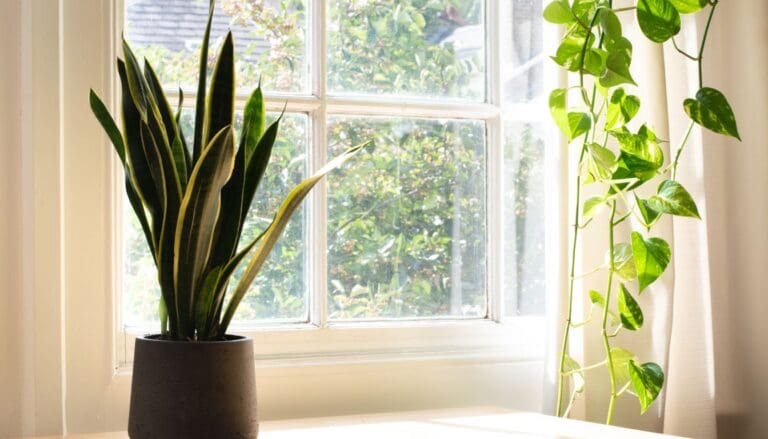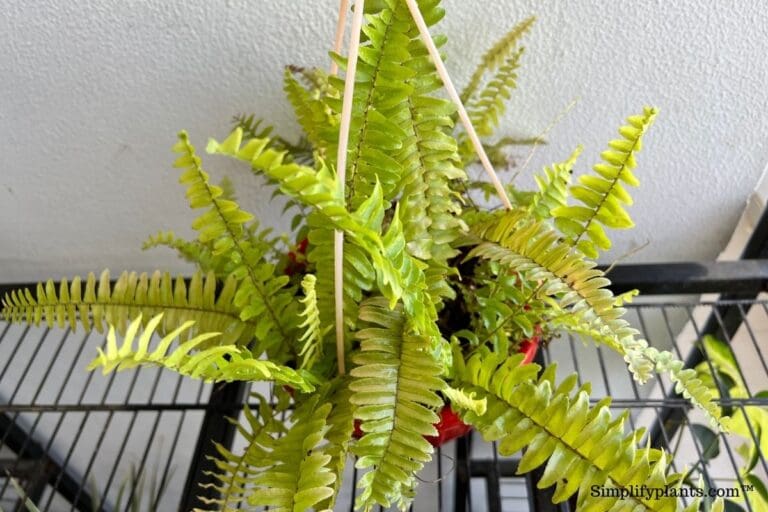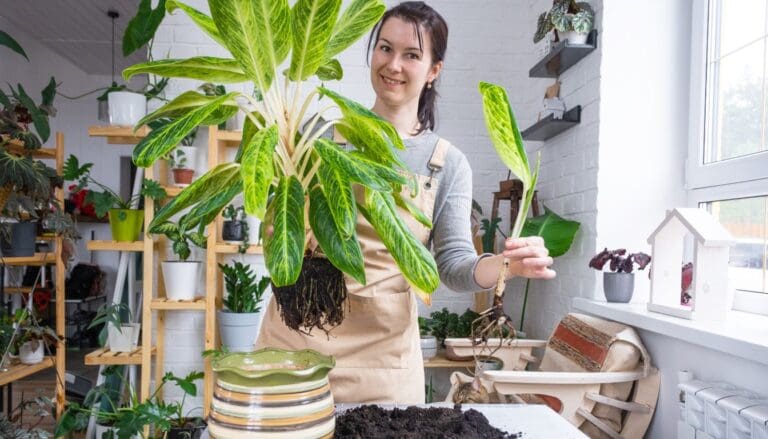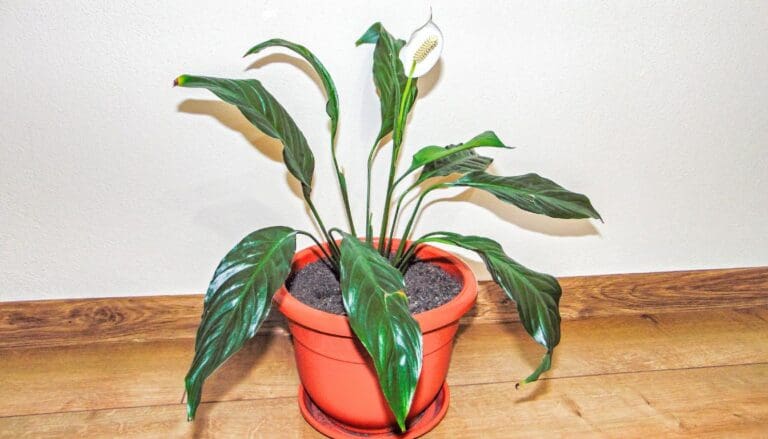7 Reasons Why Your Snake Plant Is Wrinkled
Snake plant does not want a lot of water but wants to stay hydrated during the growing season. In case the snake plant is not watered correctly, the snake plant can develop issues. And one major issue is that the leaves of your snake plant start getting wrinkled. There can be a lot of problems that can lead to wrinkles in the leaves of your snake plant.
Overwatering, under-watering, inappropriate potting mix, and humidity fluctuations are the primary cause of wrinkles in snake plants. The leaves are shriveling because the plant is dehydrated either due to under-watering or root rot. Physical damage during repotting can also lead to shriveling in a snake plant.
There is always some kind of problem in the snake plant’s watering where even the professionals make a mistake. Getting the watering right is not an art but a common philosophy, and anyone can master it.
However, if you are noticing your snake plant leaves getting wrinkled, we can attach this to the watering of the plant. There are some other reasons behind this which we will discuss in this guide.
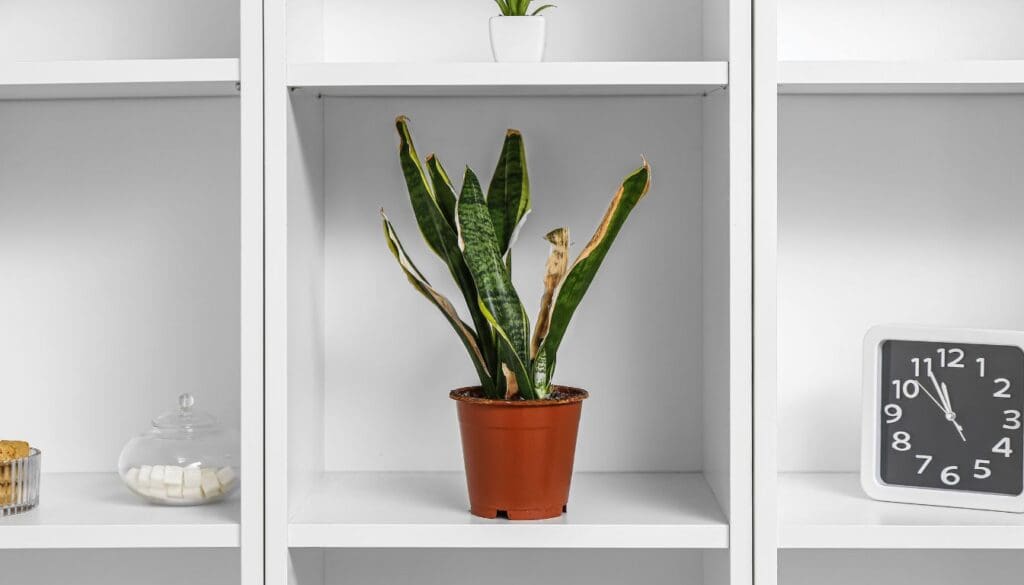
Also read: Why is my snake plant dying?
Please note: Simplify Plants is reader-supported. Some links in the post are affiliate links and I get a commission from purchases made through links in the post.
What causes snake plant leaves to shrivel?
The basics to avoid the snake plants getting wrinkled is mostly watering but let us look at the complete list that we should take care of:
- Time of the year
- Watering
- Type of potting soil used
- Light conditions
- Shock
- Temperature and humidity
- The size of the pot
We will talk about each topic in detail and talk about identifying and avoiding the leaves of the snake plant getting wrinkled. Let us get started.
Time of the year
Before we get into the watering of the snake plant, we want you to be clear with the seasons and the snake plant’s growth.
Like any other houseplant, the snake plant enjoys its growing season from spring to summer.
In this period, the soil dries out faster and needs to be watered more often. But, there is a note attached to it. Do not Overwater!
If the snake plant’s soil is getting dried quickly, it might cause the wrinkling of the leaves. Hence, water the plant to keep it hydrated.
However, when we enter the fall, the snake plant demands less water and enters its dormancy period during the winter.
The snake plant will not show any signs of additional growth in the dormancy period because the plant is resting.
During winter, we reduce the waterings to half the amount from the summer season.
Now, there are certain things that we need to take care of during the winter.
- Keep the snake plant away from the cold draft
- Do not place the snake plant near the radiators
- Occasionally mist the snake plant with the neem oil mix
- Do not fertilize the snake plant during the dormancy period
These things help maintain the moisture level in the air and keep the humidity level at par. Thus, it results in lesser chances of the snake plants getting wrinkled.
Also read: How to care for snake plant during winter?
Watering

When we talk about watering, it could lead to two possible scenarios: the plant getting overwatered or underwatered.
In the case of the snake plant, both situations can lead to the snake plants getting wrinkled.
Let us understand how.
Underwatering of the Snake plant
It is true that the snake plant is a succulent and does not require much water. The snake plant stores water in its leaves.
However, no plants like to be underwatered. It could also be that the gap between the watering has to be reduced.
Snake plants get wrinkled when the soil is too dry, or the plant is not hydrated. In this case, we will see that the plant has regained its normalcy after being appropriately watered.
To understand that the snake plant needs more water, check the soil. If the soil is too dry, then water the plant.
Now, there is another sign that will tell us that the snake plant is underwatered. We will notice that the snake plant has brown tips on its leaves.
This is an indication of the snake plant being underwatered.
Season also plays an essential role, as discussed above. If it is summer, then the snake plant needs to be watered frequently than in the winter.
During the summer, the snake plant might require water once every week and during the winter, once a month. But, always feel the soil.
Overwatering of the Snake plant
This is the most common problem for snake plants because they tend to get overwatered easily.
Being a succulent, this plant stores water in its leaves and wants the soil to be dry before being watered.
If we neglect a bit, then the snake plant might be overwatered. We can also understand overwatering by looking at the color of the leaves.
The snake plant will develop brown tips if underwatered, but overwatering causes the snake plant leaves to turn yellow or brown. If neglected, the leaves will start shedding.
Because of the overwatering, the snake plant might develop a root rot situation and invite pests.
The root rot situation also causes the snake plant to get wrinkled.
How to avoid overwatering?
We can avoid the overwatering situation by:
- Always feel the soil before watering the snake plant.
- The soil should be dry and not moist.
- Check for the drainage holes. If blocked, clean the drainage holes.
- Remove excess water that might be collected in the drainage tray.
- Use a well-draining potting soil mix.
- Make a watering regime.
- If required, attach a note to the plant, or we can use reminders.
During winter, the snake plants enter the dormancy period and require very little water. Sometimes they will need water in a month or maybe even two.
Also read: How often should you water your snake plant?
Type of potting soil used
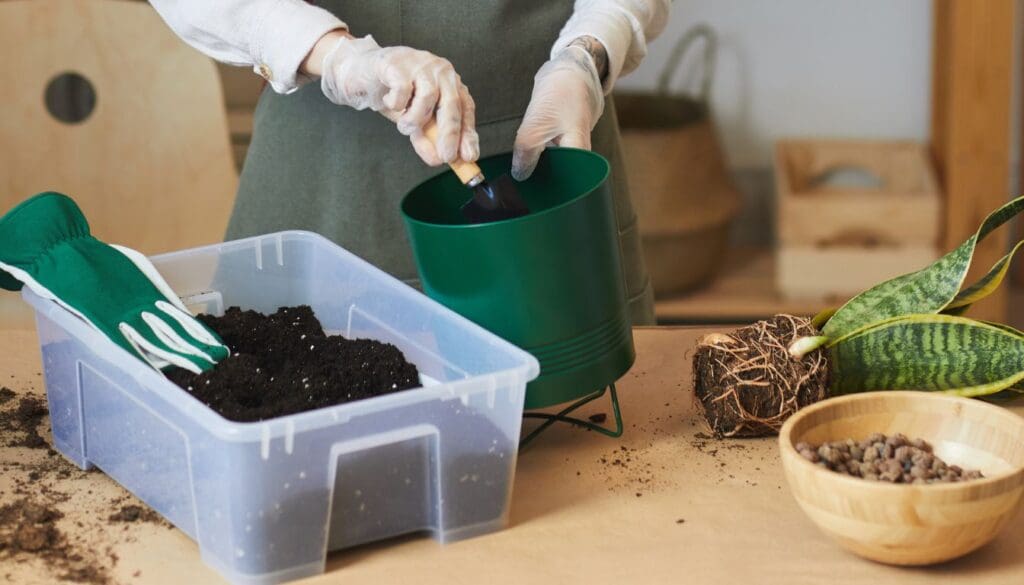
The snake plant needs well-draining potting soil because the snake plant species can be overwatered easily.
Soil is the medium from which every plant receives its nutrients and minerals. Hence, the soil, which is the growing medium has to be fresh.
If we notice that the snake plant is getting wrinkled and all the factors are correct, then repotting the snake plant in fresh potting soil might help the plant.
It could be that the older soil mix has been deprived of the nutrients and minerals and needs a new potting soil mix.
Also, there might be slight chances that the plant has been overwatered and the soil will no longer help the plant.
In such a situation, repotting the snake plant in a different pot and new potting soil will help the plant flourish again.
To repot, we will need:
- Well-draining potting soil mix
- Cactus soil mix
- Compost
- A new pot
First, remove the plant from the older pot gently and keep the plant along with the root ball under running water.
Now, mix the potting soil and the cactus soil in a 1:1 ratio. Add compost to the mixture.
Compost will take care of the micronutrient and the macronutrient factor.
Next, add the mixture to the new pot and place the roots in the pot’s center.
Be gentle during the process and make sure not to hurt the roots or cause any damage to it.
Once the roots are placed, add some more mixture of potting soil and compost. Gently tap the pot to ensure that there are no air pockets formed.
Finally, water the plant.
Provide the plant with enough indirect bright sunlight.
The repotting will ensure that the snake plant comes back to normal. Once the plant is hydrated and is healthy, we will see the wrinkles gone.
Also read: What kind of soil is good for snake plant?
Light conditions

The snake plant needs light as much as other plants need. The plants require perfect light conditions for photosynthesis.
Light is required for the snake plant to develop healthy leaves.
If the snake plant is kept in bright indirect sunlight, the snake plant will thrive, but the snake plant might burn if the light is too intense or direct.
The light also changes the variegation of the leaves. The snake plant kept under bright indirect light has a deeper color of green on the leaves.
However, if the snake plant is kept in a low light condition, then the snake plant leaves will not be as healthy as the ones kept in light conditions.
When kept in a dark spot, the snake plant leaves get wrinkled and have to be moved to a place with better light conditions.
The snake plants have a lighter shade of green and might also lose their variegation when kept in the dark spot.
If you cannot provide natural light, then we can also use artificial light.
Also read: How much light do snake plant need?
Shock
How do we define shock in the case of snake plants?
It could well be the case that the snake plant that you might have ordered has gone through stress during transportation.
Else, it could be that the growing situation from where the snake plant was brought is entirely different.
In such a case, the snake plant might take some time to adapt to the situation.
At such times, the leaves of the snake plant might get wrinkled.
Do not mess around with the plant a lot. Just let it be for a while and let the plant adapt to the new environment.
Once the environment suits the plant, you will see that the snake plant is growing healthy again.
Another reason for shock could be physical damage to the plant.
As discussed in my other posts, it was mentioned that though the snake plant has Feng-Shui beliefs, high traffic location should be avoided.
High traffic locations such as the staircase, near the entrance, etc., could be dangerous for the plant because anyone can harm the plant unknowingly.
Hence, we should choose to avoid such locations where the plant could suffer physical damage.
Pets are another factor to be considered. They might mistreat the snake plant, and this can harm both the pets and the plant.
The plant will develop a shock, but moreover, the nibbling of the plant will be toxic to the pets.
We have always suggested using Spatial plantation and hanging pots if you have pets around.
Also read: Why is my snake plant not growing?
Temperature and humidity
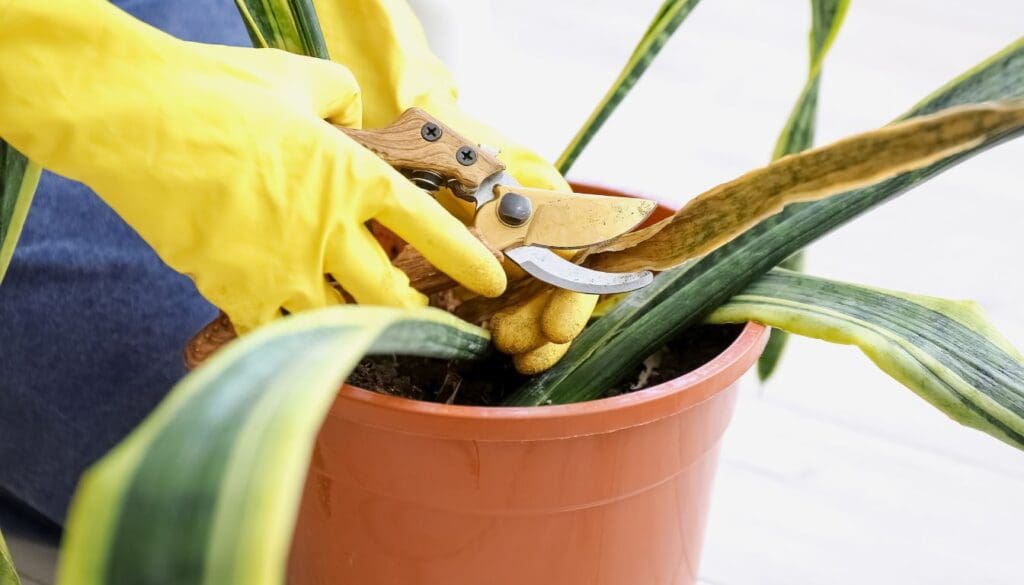
The snake plant is very sturdy in case of temperature. However, the temperature below 10°C is not suitable for the snake plants.
If we see that the snake plants have wrinkled, then it could be during the winter, where the plants experience a cold draft.
Consider keeping the snake plant away from the cold draft as they cannot tolerate winter.
We should avoid using the southern window.
This could also happen during the summers because, with high temperatures, the water dries out quickly, and the soil is dry.
The soil going dry quickly could result in the underwatering of the snake plant.
We should regularly mist the snake plant during the winter season, and if we want to avoid pests, we can add a neem oil solution in the water.
Neem oil solution is a natural way to keep the pests away from the snake plants.
Keep the snake plants away from the radiators during winter, and places like the bathroom help for that extra humidity.
We can also use a humidifier to maintain the humidity. Though the plant does not demand extra humidity, a little misting will only benefit the snake plant.
Also read: Should I mist my snake plant?
The size of the pot
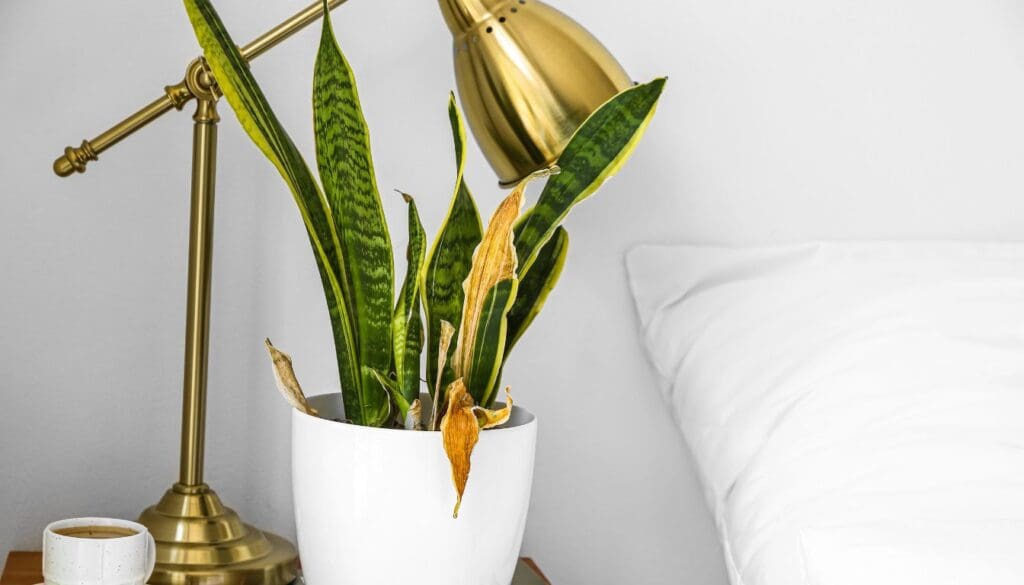
The size of the pot assumes a significant function in the development of the plant. If the pot is too big, the chances are of overwatering are high.
On the off chance that the pot is small, at that point, the roots will grow totally in the pot and will stop the development of the plant at one point.
That might also result in stunted growth of the plant and will cause the snake plant to wrinkle.
The roots of the plant need space to develop. Thus we generally move the plant to a larger pot once the plant has built up the roots.
It is an overall principle that if our plant is 1 foot in height, then we need a 2-gallon pot, and if the plant is 2 feet in height, then a three-gallon pot will be required. You can adjust the size accordingly.
Accordingly, check for the roots of the plant. The roots should be grown totally, and once created, it is the ideal opportunity for a repot.
Also read: Do snake plant like to be root bounded?
Final thoughts

In most scenarios, the snake plant getting wrinkled is generally because of the watering conditions. The overwatering is one rookie mistake that anyone can make.
Always follow a watering regime and feel the soil before watering.
This way, we can avoid the snake plant getting wrinkled.
Also read: How to revive a dying snake plant?
Source: The University of Arkansas Division of Agriculture, University of Minnesota, Snake plant profile.
Recommended Garden Supplies
| Product Image | Our Recommended Gardening Supplies | Check Offers! |
|---|---|---|
Top Top
Top
Top
Top
Top
Top
Top
Top | rePotme Houseplant and Tropical Classic Potting Soil Mix | Check Offer On Amazon |
 Top
Top
Top
Top
Top
Top
Top
Top | Espoma Organic Indoor Plant Food | Check Offer On Amazon |
 Top
Top
Top
Top
Top
Top
Top
Top | GooingTop LED Grow Light 6000K Full Spectrum Clip Plant Growing Lamp | Check Offer On Amazon |
 Top
Top
Top
Top
Top
Top
Top
Top | Soil Moisture Meter | Check Offer On Amazon |
 Top
Top
Top
Top
Top
Top
Top
Top | Govee Hygrometer Thermometer, Bluetooth Enabled! | Check Offer On Amazon |
 Top
Top | LEVOIT Humidifiers for Large Room(Best For Plants) | Check Offer On Amazon |
 Top
Top
Top
Top
Top
Top
Top
Top | Upgraded DIY Automatic Drip Irrigation Kit, 15 Potted Houseplants Support | Check Offer On Amazon |
 Top
Top
Top
Top
Top
Top
Top
Top | Stainless Steel Heavy Duty Gardening Tool Set | Check Offer On Amazon |
 Top
Top
Top
Top
Top
Top
Top
Top | Bonide Insecticidal Soap | Check Offer On Amazon |
 Top
Top
Top
Top
Top
Top
Top
Top | Bonide 32 oz Spray Neem Oil for Organic Gardening | Check Offer On Amazon |
 Top
Top
Top
Top
Top
Top
Top
Top | Garden Safe Fungicide | Check Offer On Amazon |

